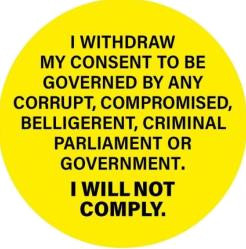2021-11-07
The Drax power station used to burn coal. It was converted to burn "biomass" (wood pellets) at some cost because wood pellets are "renewable". But does "renewable" mean "renewed" in the aggregate?
In any event, they are not renewable quite as quickly as they are burnable, so unless vast numbers of trees are newly planted so that the annual biomass reduction is more than matched by annual biomass regrowth ... the whole basis upon which this "netzero" "green" fuel is consumed falls apart - and that's before we consider the carbon costs of mining and transporting coal or gas against the costs of growing felling drying pelleting and transporting Lithuanian or American forests to the UK.
Lets us arbitrarily assume that 10 million trees are pulped into biomass annually to feed a power-station. If each mature tree takes 10 years to grow, than we would require a forest big enough initially to provide biomass for ten years, in this case 100 million trees minimum. Bigger if you want to provide contingency against unknown future supply/demand variability. How practical is that? "Biomass" is a slow-growing commodity whose supply cannot easily be adjusted over the long-term.
One might (work with me here) net off the CO2 reduction achieved by leaving the forests in place against the CO2 generated by burning coal or gas. Since (according to NetZero Watch's sources) the amount of CO2 released by burning biomass exceeds the equivalent quantity of CO2 from burning coal, we could argue that we would have been already at "NetZero" by determining to leave the forests in place, and we could plant a more limited number of new trees for good measure. That way we would at least start by reducing the net CO2 emissions from day 1 rather than starting from a position of increasing net emissions through net deforestation.
In any case, hiding emissions by taking credit for CO2 offsetting whilst off-shoring that same off-setting out of our control would seem to be a policy underpinned by hope rather than reality.
We would have to factor in whether the biomass now consumed by the power-station would have ultimately ended up being burned anyway, which is probably the fate of much of the wood grown in the world when it isn't left to rot where it falls in the forest. In this case those who would have burned it will have to find alternate sources of supply. Coal for example. How can we be sure that feeding Drax with biomass will not simply lead to additional CO2 emissions elsewhere?
We have been here before, when our government effectively forced our carbon-heavy industries (steel, aluminium etc) off-shore, often to the Far East where CO2 controls were (and are) - shall we say - less rigorous.
NetZero Watch has the story, pointing out that nuclear and gas would be comparatively more practical (and green) (and reliable) (and less expensive) than the current consumption of biomass.
Anyone that doubts this should ask why we need an "£800 million subsidy" for burning biomass. Ultimately, all expenditure goes on buying energy somewhere down the line, and subsidies simply add to our energy needs (and therefore currently emissions, since "green" power is still an unreliable supplement to variable base-load power provided by fossil fuel).
Surprisingly the same truth appears to be dawning on the EU, who are suggesting a similar approach (on a purely transitional basis of course).
The underlying truth is that energy supply should not be a matter for religious faith, nor for creative accounting, but a matter for hard-headed assessment of both the engineering facts and the likely engineering possibilities.
The government has a nasty habit of assuming not only that new innovation will improve the possibilities over time, but also that the government can make reliable predictions about where that innovation should occur and how fast it can happen. Someone should whisper in their ear that predictions are notoriously unreliable, especially when about the future.
Surely a wise government would base their planning upon current or imminent technology. Any future development can then be incorporated into the planning once it is shown to be viable, thus bringing improvements forward and enabling the government to over-deliver against previous expectations. Just like a wise business in fact.



